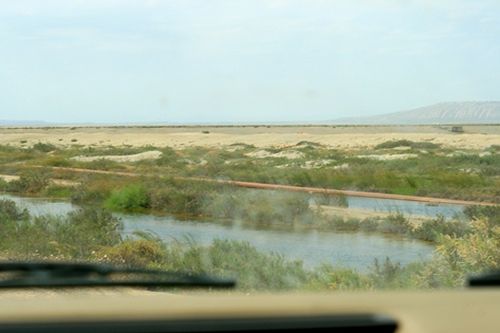EU/CoE Joint Programme supporting the extension of EU's NATURA 2000 principles through the Emerald Network in Eastern Europe and the South Caucasus (2009-2011)
 The Bern Convention on the Conservation of European Wildlife and Natural Habitats sets out to conserve wild flora and fauna and their natural habitats, to promote cooperation between states, to monitor and control endangered and vulnerable species, and to assist with the provision of assistance concerning legal and scientific issues.
The Bern Convention on the Conservation of European Wildlife and Natural Habitats sets out to conserve wild flora and fauna and their natural habitats, to promote cooperation between states, to monitor and control endangered and vulnerable species, and to assist with the provision of assistance concerning legal and scientific issues.
The European Community, as such, is a Contracting Party to the Bern Convention. In order to fulfill its obligations arising from the convention, the Habitats Directive 92/43/EEC came into force in 1992. Together with the Birds Directive, it forms the cornerstone of the EU's nature conservation policy. It is built around two pillars: the Natura 2000 network of protected sites and the strict system of species protection.
The Emerald and Natura 2000 networks are fully compatible with each other and use the same software. The implementation of the Emerald Network represents a tool for preparing the target countries to comply with internationally agreed commitments, including the Convention on Biological Diversity, the Bern Convention, and the Habitats Directive (for accession countries). The cooperation between the Council of Europe and the European Union is therefore the logical consequence of their common commitment for the protection of biodiversity.
Objectives
The project provided assistance to seven target countries (Armenia, Azerbaijan, Belarus, Georgia, Republic of Moldova, the Russian Federation and Ukraine) in assessing their natural resources, in identifying species and habitats to protect and in selecting the potential sites suitable for ensuring the long-term survival of the species protected by the Bern Convention.
The project overall goal was to protect biodiversity in the seven countries and more precisely to implement the Convention on Biological Diversity and its programme of work on protected areas, as well as EU's and Bern Convention principles concerning the protection of habitats and species. The project was implemented for 3 years and four months, covering the period 16/12/2008 until 15/04/2012.
Specifically the Joint Programme aimed at:
- Setting-up and training (where necessary) of national multidisciplinary Emerald teams
- Identification of potential sites of Areas of Special Conservation Interest of the Emerald Network of the Bern Convention
- Data gathering and maps' distribution on all selected species and habitats
- Description of potential areas of special conservation interest using the Standard data form of the Emerald /Natura 2000 software
Results
The Joint Programme resulted in the identification of 957 potential Emerald sites of a total surface of 357.000 km² in ENP East region and Russia. The final project results equally show that countries have been able to achieve their objectives in terms of sites' GIS distribution maps, they have gained very good skills when using the Emerald Software (N2000 Software) and are now proficient on the requirements of the ecological networks and their constitution process.
When it comes to the ecological/technical databases of the potential Emerald sites, the national Emerald teams from the 7 countries have achieved to deliver the final data as foreseen in the project objectives and within the given deadlines. However, some gaps remain in terms of ecological data and in particular regarding sufficient site identification in big countries like Belarus and the Russian Federation. Significant progress was also achieved in channelling and assembling in a coherent manner the knowledge and national expertise in the biodiversity field in each partner country, as well as in updating the national data on the population and distribution of species and habitats, through the financing of field visits. Building up countries' capacities while preparing the Emerald Network brings the target countries closer to EU methods and standards on nature and biodiversity conservation. The project activities also contributed to raise the attention of national authorities on the need to continuously manage and monitor their biodiversity.
The exercise of building up a network of sites comparable to the EU's Natura 2000 is also beneficial to the international efforts e.g. to provide for a resilient and effective network of protected areas to mitigate the effects of climate change on the distribution of species and natural habitats.










